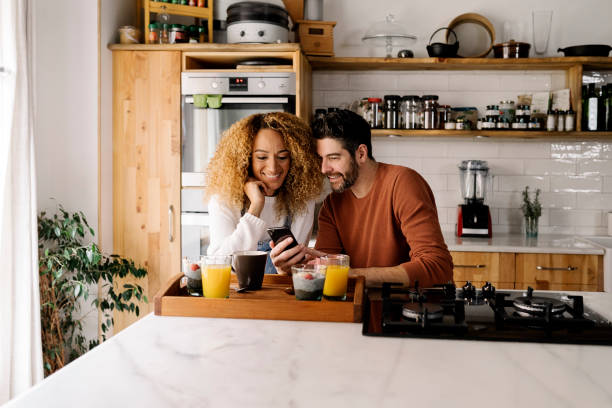Imagine yourself in an unfamiliar environment. Perhaps it is dark, and you’re having trouble seeing what might be ahead. You probably don’t imagine a feeling of calm associated with this mental image. Probably, you would imagine a pit of nerves in your stomach, as you move through the space on high alert, ready and waiting to react if something or someone threatens your safety. That feeling, the feeling of unease, is an anxious feeling. It is a response to stimuli that developed in humans in order to protect us. A lot of times, this response prevents us from making unsafe or harmful decisions, which is what we need in order to live happy and healthy lives. But somewhere along the way, anxiety became our enemy. It became something we avoid with our dear lives. Sometimes, we not only avoid, but also deny, repress, or even project our feelings onto other people, like the hot potato game where we toss it around because we don’t want to be the one to hold it, to feel it.

You may say you have some good reasons to have such an estranged relationship with your anxiety. This is fair. Not all situations that create anxiety are life-or-death; sometimes, it can be frustrating to experience a response that you find disproportionate to the situation. You may have suffered a lot and experienced a lot of embarrassing moments because of anxiety. Anxiety can show up in the middle of many important moments in our lives: during a job interview, a performance, or even during intimacy. In those moments, our physiological response might distract or anger us, as we attempt to approach the situation at hand in what we seem to be an “appropriate” way. We may also be unable to determine if our level of anxiety matches our actual level of danger or distress, further elevating the anxiousness we feel. It can be very difficult, at a time like that, to remind ourselves that anxiety does serve a purpose.
How anxiety blurs our reality:

Anxiety has a tendency to whisper all sorts of catastrophic situations into our ears. It loves “what-if” scenarios where it comes up with the wildest and most destructive possible ending to the movie of life we are experiencing. Because its function is to prepare us to survive the worst case scenario, anxiety has to first decide what that might look like. In order to do that, we experience the corresponding symptoms of anxiety as the brain and body process the situation at hand and project possible outcomes.
Anxiety often looks at all that is missing and all that is going wrong, instead of what is going well or right. It is very efficient that way; why draw attention to the things that aren’t a threat? Anxiety doesn’t have time to process all the safe and functioning aspects of a situation before it can identify potential problems. It won’t often say, “well, there’s an earthquake happening, but the house is not on fire, you have an amazing best friend who supports you, and you got that bonus at work recently.”
Anxiety talks to us solely about what is perceived to be wrong, and continues talking until something is done to improve the situation. This sort of rumination becomes an obsession; the more thoughts that are fed to the anxiety, the bigger it grows and the more of a hold those thoughts can take. Anxiety’s chatter can bring in so much doubt that it may eat away our sense of self-confidence and safety. When anxiety says, “something doesn’t feel right”, or “something bad will happen”, or when it asks “when will the other shoe drop?” we may respond with panic and distress, or take action to get away from the situation. Sometimes, despite wanting to move, we may freeze.
Biology of anxiety:
We all have innate mechanisms wired to help us deal with anxiety. This chain reaction of responses to heightened situations is called our Flight- Fight- or Freeze response system, which is a complex chain of reactions that happen almost instantaneously. In fact, our body begins to respond to imminent threats before our brain even processes what we are looking at! The speed with which we are able to respond to these stimuli is a definite asset when in a life-or-death situation, but far less manageable when confronted with an “overreaction” that we could cut off if we only had a moment to do so.

While the reactions that occur in the human body to escape quickly or fight with strength are helpful in those situations, they have unfortunately adapted to our modern-day stressors. Now, instead of a rush of adrenaline in a situation where you need to lift a car off of your child, you may have these same chemical reactions when stuck in traffic, or nervous about an exam. This is not helpful, and in fact, studies have found that years of stress are bad for our health, both mental and physical. This is why these responses to triggers, while inherently in place in order to keep us safe, are also best if managed and/or reduced.
How is anxiety modeled to us?
When we look at our comprehension of anxiety, and our ability to process it, we have to bear in mind the impact and influence of family, friends, media, and society at large. While a general awareness of anxiety or experience with its manifestation in others may help us identify our issue, or put into practice methods of dealing with its ramifications, it can also be a distraction or misdirection if anxiety doesn’t present in ourselves the way we’ve seen it in others.
If we are raised in an environment run by someone with anxiety, this can also impact our relationship with anxiety as a learned behavior. As we know, the way we feel impacts the way we think and act, and the way we act impacts the way we feel. If we are used to an anxious environment, we may adopt patterns that recreate that emotional state for us because it is familiar, and familiarity breeds comfort. We may also have anxious responses to stimuli that we are mirroring from what we have seen, as opposed to how we might actually have responded if we were able to process an experience or incident in a vacuum. While we are not to blame for difficult learned behaviors, we do have the opportunity to identify them and adjust our reactions through time and practice. It is important that we know and believe that we are able to tackle our anxiety, no matter how long standing it is.
A great way to do this is to find a way to “befriend” your anxiety. Once you understand the biological reasons for the existence of these responses and the limits of anxiety’s power, you can begin to appreciate your autonomic responses for their ability to assist during emergent situations, while also relegating less-beneficial anxious manifestation to a place of lesser status in your emotional hierarchy.
3 Steps to Befriending Your Anxiety:
- Feel the fear and do it anyway:
How often have you delayed a goal or a decision because you were waiting for the “right” feeling? The truth is that often we think to ourselves, “I will do it once I feel ready.” For some, to feel ready might require motivation, but for others, feeling ready means feeling confident. It means “a time when I don’t feel anxious or scared about taking this one action”. Unfortunately, if we await this confident feeling, we end up waiting a long time, because delaying decisions or avoiding taking certain actions doesn’t cure anxiety, it just represses it. What would make the anxiety go away? As strange as it may sound, it is actually facing anxiety. The only way we can overcome our fears and anxiety is to go ahead and face them.
We have to learn that taking actions and feeling anxious are not mutually exclusive.
It is entirely possible – and, moreover, often necessary – to move forward through a feeling or fear or nervousness. Not only does this keep momentum going in our lives, but it helps us to evaluate our anxiety and recognize that most of the time it is not indicative of a catastrophic situation.
Meeting these challenges head-on also serves to educate us as far as ranking our fears. The idea of something, left in the imagination to run wild, will often be far more imposing than the actual action we end up taking. Think, for example, about looking at some dishes piled next to the sink. How many times do we delay tackling the job, only to find it over in a flash once we simply roll up our sleeves and get to work. The delaying and dreading of the task was far more time and energy-consuming than actually doing the dishes. In completing this task, we also discover the bonus of having more counter space; a less-cluttered environment. Taking on tasks or situations that give us anxiety can have this ripple effect, also: where we accomplish one thing, we also inadvertently succeed in accomplishing or lessening the work of another.
The first time we go ahead with tackling something that makes us nervous or afraid is always going to be the most difficult time. But the other positive outcome of “doing it anyway” is that, nine times out of ten, the next time we can remember how much easier it was than we had imagined it would be. Long-term, retaining these positive memories allows us to associate similar tasks or situations with ones we already know we can handle.
2.Reframe the way you view anxiety:
Anxiety can help to identify and respect priorities, as it can be an indicator that you are invested in the outcome of a given situation. To make it simple: anxiety may be there because you care.
There is a famous study that looked at college students’ performance levels and their anxiety to study how one’s anxiety impacts one’s performance. What the study found was inverted U-shape results. It stated that when anxiety is high performance is low. Similarly, when anxiety is low, performance remains low. But when there are moderate levels of anxiety, then the performance is the highest. What this result taught us about anxiety is that it has a purpose, and if it is managed well, it can have a positive impact on our lives through motivation and energy. Think about it. When you are getting ready for a job interview and you are feeling anxious, that anxiety can cause you to make poor eye contact or to forget your thoughts. When anxiety is low, we often do not take the interview seriously and might show up unprepared. What we find through studies and through trial and error is that if we can learn to keep our anxiety at moderate levels, it can give us enough energy to take the tasks at hand seriously and be prepared, but not so much anxiety that we are paralyzed by it.
Now that we know the benefits of anxiety, let’s talk about how to reframe our opinions of it. I once heard the following suggestion: if you are about to go on stage and you feel tightness in your stomach, instead of calling it nervousness, call it excitement. Reframe the anxiety as an indicator of value, commitment, prioritization, or passion. Name the things that you get anxious about: asking for a raise; confronting your partner; purchasing a new car. Why do those things make you feel anxious? Because they are tied into things you care about and value.
You might be anxious to ask for a raise because you care about your job and your relationship with your boss. You might be anxious to confront your partner because you don’t want to hurt their feelings and you don’t want the confrontation to have a negative impact on the relationship. You may feel anxious to purchase a new car because you don’t take your finances for granted and you value making financially-responsible decisions.
The next time you feel anxious, instead of hating on the anxiety, maybe you can appreciate that it has made a visit because its presence means you care. Anxiety is always tied to things you value. In the case of relationships, occasions, tasks or possessions, it can show how much you care about those things. In the case of your life and health, it may be there to keep you safe.
- Always talk to your anxiety with compassion:
It can be difficult to have appreciation for our anxiety when it seems to be getting in the way of our success or our ability to cope with or communicate about a situation, even though we know why anxiety exists in the first place. This is why understanding the physiology of anxiety is also a helpful tool in understanding an anxious situation.
One of the reasons that high anxiety impairs our thinking is that it utilizes different parts of our brain. MRI studies show that anxiety activates the amygdala, where we process our emotions. While this occurs, our frontal lobe (where we engage in decision-making and judgment) is deactivated. Your brain literally has a hard time thinking straight when your emotions are high. This is why we regret the things we said when we were angry or often think of something very wise to say after the end of an interview when we feel calmer. Understanding that the processing of anxiety and subsequent communication has this barrier or limitation can make it easier to come to terms with anxiety.
Think about how you talk to people you love. How do you show them that you care? How do you show support? The people you love don’t always do what you want them to do, but most of the time we know that they have our best intentions at heart. The same thought process can be applied to anxiety. Okay, maybe asking you to talk to anxiety like you talk to people you love is a bit of a stretch, but what if you at least stop talking to anxiety so harshly and start being nice?
In the heat of the moment, it can be difficult to come up with something nice to say. Positive mantras and coping-statements are important in the way you befriend your anxiety.
I know you are trying to take care of me but I got this.
Anxiety is like a wave, I just have to ride it to the shore.
I have survived my worst anxiety, I can survive this too.
As with all of the habits and patterns we seek to implement in our lives, befriending our anxiety is and will be an ongoing process that feels simpler some days and impossible on others. The important thing is to realize that we have the tools and information to understand, approach and process our anxiety. It may take practice and it may take time, but even taking small steps is beneficial when it comes to formulating a more beneficial relationship with our anxiety.
Embracing You Therapy Group Practice
Here at Embracing You Therapy, we invite you to explore with us how life would be different if you had more control over your thoughts and emotions, and we invite you to consider that it is possible to accept things just as they are, embracing imperfections to create a gentler place for calm in your life.
Let’s learn what drives your unique perspective on anxiety and stress. Then, let’s find the tools-your unique tools-that help you respond to life in a healthy, calm way. Contact us today for your complimentary 15-minute phone consultation with one of our Client Care Coordinators.





